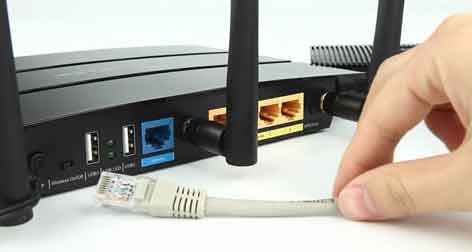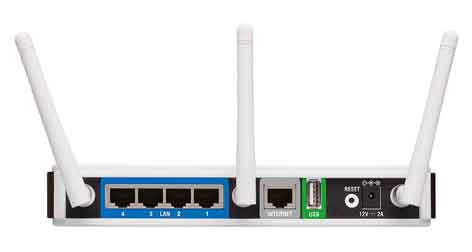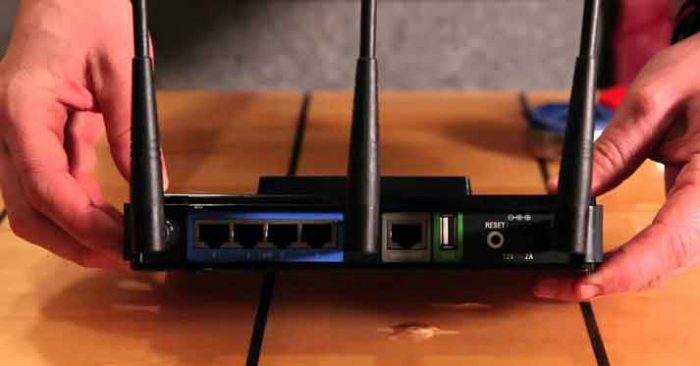Normally, when most home users go for routers and other networking apparel, D-Link doesn’t exactly jump up to the top of the pack, but for gamers, nothing but the best will suffice. And D-Link has catered to that market with their DGL series of products. Starting out with their DGL-4100 wired router up to the current incarnation, the DGL-4500, they set the bar for gaming routers by offering some unique features.
The DGL products, with the 4500 being no exception, all have gigabit LAN ports. While that might not mean a whole lot to most, for gamers it makes all the difference. This means that each port has 10x the bandwith of a normal ethernet port on a router, and in the case of the DGL-4500, even the WAN port is a gigabit port as well. This has the effect of not only increasing the speeds at which data can be transferred from one computer to another by a factor of 10, but also cutting down on the latency between them.

This means that when your sniper squeezes the trigger, the bullet will be fired that much faster. The ports are also outstanding for those who want to use home Network Address Storage devices, the majority of which require gigabit ports, not only for the data transfer speeds needed, but since many people in possession of an NAS want to use them as external hard drives between several computers, get more info.
The web interface for the DGL-4500 can be a little intimidating for the non-gamer, but for most gamers, it really is quite intuitive, since more often than not, they’re rather tech-savvy and know their way around a router. You can do everything from opening TCP/UDP ports on specific computers you play specific games on, to setting them up with fixed IP addresses, filtering MAC addresses to allow or exclude certain computers, and viewing the active connections on the router.
For the parental figures out there, they can set specific times to keep connections active, so that once it’s the little one’s bedtime, their connection will cease. They can also set up the router to prevent the kids’ computers from accessing websites they’d rather not have them visit.
And there is also where the DGL-4500 also excels. The 4500 features a dedicated internal processor to be able to handle not only the increased traffic flow between computers, but also to power the router’s internal software, which includes a type of packeteer service called GameFuel. This software was designed specifically for gamers in mind, since it works to give priority to certain types of Internet traffic over others, such as that for games and streaming audio.
This certainly comes in handy when a gamer is in the middle of a dozen enemy soldiers, and every millisecond of latency counts, when their little sister wants to see the latest Youtube video, dad wants to get the latest sports scores on ESPN.com, and mom wants to Google that new strawberry shortcake recipe. There are many profiles programmed into GameFuel, so you can customize it for anything from FTP to VPN.
Wirelessly, the DGL-4500 is on the bleeding edge of technology. It’s equipped with the Draft N standard, capable of 300MB/s, and is also compatible with Wireless A, and Wireless B/G adapters. This bodes well for gamers who want to connect their gaming consoles wirelessly, and take full advantage of the speed. The router also has three 5-dbm dual band (2.4GHz and 5 GHz) antennas, which allows multiple wireless connections over both the A and B/G/N standards. These antennas also provide outstanding coverage, and as an example, I had little trouble using my laptop from one side of the house, while the router was on the opposite side of the house. I was even able to view my wireless network clear from the garage with little trouble.
And for those worried about security, you can program the DGL-4500 in many different and varied ways. It comes equipped with both 64/128-bit WEP, as well as WPA and WPA2 wireless security protocols. This means that you can secure down your wireless and keep those pesky neighbors from mooching off your wireless, and potentially making you look like you’re doing something illegal. Also, the DGL-4500 can be programmed to allow VPN, connections to pass through, so if you have a 3 AM call to reset someone’s password, the router will allow you to log in to work without a hitch.
Aesthetically, the wireless router does have both good and bad points. One of the first things people notice about the router, besides the shiny black exterior and three antennas, is the Organic LED display, which can display everything from what computers are connected to which gigabit port, to their addresses, as well as network throughput both inside the network itself, the overal throughput to and from the cable modem, and the list goes on.
It can be a bit cumbersome, because there is no “Back” button, only an “OK” and a “Next” button. Also, there is only one power light in the front, instead of the usual WAN and LAN light indicators most people are so accustomed to. To be fair, some gamers may not even notice, since they’ll be too busy fragging people to watch those connector lights anyway. There is a handy reset button on the side which, if you mess up a setting that keeps you from connectiong with your favorite game, you can set the router back to the factory defaults, and reprogram it to all your fragging needs.

One other option which may or may not be useful is the USB2.0 port. With this port, a person can connect an external hard drive, a USB printer, etc. The one thing to bear in mind is that in order to take advantage of it, Microsoft Silverlight needs to be installed on the computers that want to use whatever’s connected to the USB port. However, that will hardly be a stopping point for most gamers, since they’re usually more concerned with such things as bandwidth, latency, and where that darn sniper’s located.
So with all that being said, the D-Link DGL4500 is an outstanding addition to the gamer’s hardware, as well as those interested in having both security and the bandwidth necessary to move big stuff.
